Header Image from National Park Service Jean Lafitte National Historic Park and Preserve, Louisiana.
Louisiana was admitted on April 30, 1812 as the 18th state.
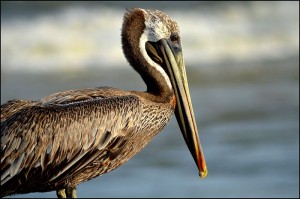 Bird: Eastern brown pelican
Bird: Eastern brown pelican
– The brown pelican is a very gregarious bird; it lives in flocks of both sexes throughout the year. The brown pelican is a monogamous breeder within a breeding season, but does not pair for life. Brown Pelicans make their spectacular dives into the water from as high as 65 feet. If humans dove into the water at such a height over and over, we’d probably hurt ourselves. But pelicans have adapted to protect themselves. They have special air sacs beneath their skin that they inflate just before impact to protect internal organs. And as they dive, they rotate to the left, to avoid injuring their trachea and esophagus, which run along the right side of their neck.There’s that poem by Dixon Lanier Merritt:
Oh, a wondrous bird is the pelican,
His bill can hold more than his belican,
He can take in his beak,
Food enough for a week,
But I’m damned if I see how the helican.
It was believed that whenever food grew scarce, mother pelicans would intentionally stab themselves on the breast with their beaks and then use the blood to feed their chicks. It’s a noble idea, but it’s a myth that probably has something to do with the gular pouches of pelicans, which turn an orange-reddish color during the breeding season. Maybe an onlooker saw one preening and got the wrong idea.
 Flower: Magnolia – Magnolia is an ancient genus. Appearing before bees did, the flowers are theorized to have evolved to encourage pollination by beetles. A magnolia often symbolizes Yin, or the feminine side of life. White magnolias symbolize purity and dignity. Magnolia blossoms have been used to help with menstrual cramps, cough, congestion. (Pregnant women should avoid any alternative medicine including magnolia.)
Flower: Magnolia – Magnolia is an ancient genus. Appearing before bees did, the flowers are theorized to have evolved to encourage pollination by beetles. A magnolia often symbolizes Yin, or the feminine side of life. White magnolias symbolize purity and dignity. Magnolia blossoms have been used to help with menstrual cramps, cough, congestion. (Pregnant women should avoid any alternative medicine including magnolia.)
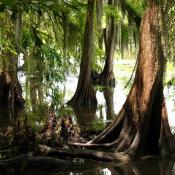 Tree: Bald Cypress – Bald cypresses are long-lived and slow-growing; old trees are usually hollow. Unlike most conifers (which are evergreens), the bald cypress is deciduous (it loses its needles in the fall – giving the tree a “bald” appearance). A majestic tree that grows in many parts of Louisiana, particularly in swampy areas. Cypress wood is very resistant to decay and the wood is considered valuable for a variety of products.
Tree: Bald Cypress – Bald cypresses are long-lived and slow-growing; old trees are usually hollow. Unlike most conifers (which are evergreens), the bald cypress is deciduous (it loses its needles in the fall – giving the tree a “bald” appearance). A majestic tree that grows in many parts of Louisiana, particularly in swampy areas. Cypress wood is very resistant to decay and the wood is considered valuable for a variety of products.
State Quarter
From theus50.com
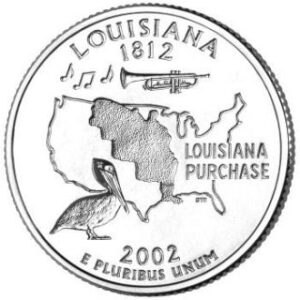
The Louisiana quarter displays the image of Louisiana’s state bird — the pelican, a trumpet with musical notes, and the outline of the Louisiana Purchase territory, along with the inscription “Louisiana Purchase”.
Thomas Jefferson bought the Louisiana Territory from Napoleon Bonaparte in 1803 for $15 million. Dubbed the “greatest real estate deal in history” the Louisiana Purchase added thirteen new states to the Union, nearly doubling its size and making it one of the largest countries in the world.
The trumpet on the coin is a tribute to the state’s heritage of jazz music, a genre heard and played by millions of enthusiasts around the globe. Jazz was born in New Orleans over a hundred years ago, a combination of elements from blues, ragtime, and marching band music. A multitude of musicians propelled jazz from New Orleans’ French Quarter onto the world stage, making the style a dominant force in 20th Century music.
Capital: Baton Rouge – The capital of Louisiana, Baton Rouge, supposedly got its name (which translates to “red stick”) in 1699. French explorer Pierre Le Moyne d’Iberville wrote that he saw a pole covered in animal blood along a Mississippi River bluff. The pole served as a marker signifying the division of land between the Bayougoula and Houmas Indian tribes.
Nickname: Pelican State– Louisiana’s first territorial governor, William C.C. Claiborne, had great admiration for the awkward bird that inhabited the Gulf Coast region. The pelican, rather than let its young starve, would tear at its own flesh to feed them. The Governor’s great respect for the Pelican led him to first use the Pelican symbol on official documents. (The story is myth…see information above about the pelican.)
Motto: Union, justice, and confidence
Louisiana Facts and Trivia
The first Europeans to arrive in Louisiana were Spanish explorers. First came Panfilo de Narvaez in 1528 and then Hernando de Soto in 1543. However, Europeans did not return and begin to settle the land for over 100 years.
In 1682, French explorer Robert de La Salle sailed down the Mississippi River and claimed much of the interior of North America for France. He called this land the Louisiana Territory after King Louis XIV. The current state of Louisiana was just a small portion of this large territory.
The first permanent settlement in Louisiana, the city of Natchitoches, was established by the French in 1714 along the Red River. Over the next several years, more French began to settle the region, especially along the Mississippi River. In 1718, the city of New Orleans was established. It quickly became a major trade port for the territory as goods traveled down the Mississippi River and then to the Gulf of Mexico. New Orleans became the capital of the territory in 1722.
Cajuns and Creoles
Meanwhile, French Catholics settled in the French colony of Acadia, modern day Nova Scotia. Britain took control of the region in 1713. Unable to get the Acadians to pledge allegiance to the crown, the British forced their deportation. (The Great Expulsion 1755-1764) This happened in waves with each wave going to different destinations, some to Canada, New England, and others to Louisiana.
These Acadians settled along the waterways west of the Mississippi River eventually spreading through the prairies to the western border of Louisiana and Texas. Cajun Country is locally referred to as Acadiana and is an officially recognized area of French-speaking parishes.
The French word “Acadien” evolved to “Cadien”, then was anglicized as “Cajun”.
Cajuns aren’t Creole, and a Creole isn’t a Cajun. Creoles as an ethnic group are harder to define than Cajuns. “Creole” can mean anything from individuals born in New Orleans with French and Spanish ancestry to those who descended from African/Caribbean/French/Spanish heritage.
One of the primary differences between Cajun and Creole is in their style of cooking. Creole cooking is sophisticated, urban while Cajun cooking is country, one-pot, make-do.
It is said that a Creole feeds one family with three chickens and a Cajun feeds three families with one chicken.
Spain took control of Louisiana in 1763 and then returned it to France in 1800.
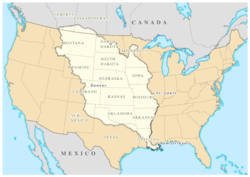 In 1803, the United States purchased Louisiana from France as part of the Louisiana Purchase Initially, President Thomas Jefferson had only wanted to buy New Orleans because of its importance as a port.
In 1803, the United States purchased Louisiana from France as part of the Louisiana Purchase Initially, President Thomas Jefferson had only wanted to buy New Orleans because of its importance as a port.
Tasked with negotiating the purchase of French land on behalf of the U.S. government, James Monroe and Robert Livingston initially offered $5 million and then $10 million for New Orleans and what was then called West Florida. Napoleon countered by offering all of the Louisiana Territory for $15 million for 828,000 square miles.
The purchase nearly doubled the size of the United States. Thirteen states were carved from the Louisiana Territory.
At first, Louisiana was organized as the Territory of Orleans. The rest of the Louisiana Purchase was known as the Louisiana Territory.
On April 30, 1812, Louisiana was admitted as the 18th state.
The War of 1812 lasted from 1812 to 1815. The last major battle in the war was fought at New Orleans. The British invaded New Orleans with an overwhelming force of 11,000 soldiers. However, the U.S. Army under the leadership of General Andrew Jackson fought back and defeated the British. The Battle of New Orleans was fought two weeks after the War of 1812 had ended but it took more than a month for the news of the war’s end to reach Louisiana.
When Abraham Lincoln was elected president in 1861, Louisiana joined the rest of the southern states in seceding from the United States. They joined the Confederate States of America. However, part of the Union military strategy was to gain control of the Mississippi River including the port of New Orleans. In 1862, Union forces captured New Orleans and held this important port throughout the rest of the war. When the war ended in 1865, Louisiana underwent a period of Reconstruction. The state was readmitted into the Union in 1868.
Between April 17,1862 and May 18, 1864 20 major Civil War battles and engagements were fought on Louisiana soil.
The first American army to have African American officers was the Confederate Louisiana Native Guards. The Corps d’Afrique at Port Hudson was sworn into service on September 27, 1862.
Louisiana has one of the highest alligator populations in the country, with an estimated two million in the wild and another 300,000 on alligator farms. The hide and raw meat industries collectively bring in around $57 million a year.
The world famous “Mardi Gras” is celebrated in New Orleans. Mardi Gras is an ancient custom that originated in southern Europe. It celebrates food and fun just before the 40 days of Lent: a Catholic time of prayer and sacrifice.
Louisiana has the tallest state capitol building in the United States; the building is 450 feet tall with 34 floors.
Louisiana Cities:
The golden spike, commemorating the completion of the east-west Vicksburg, Shreveport and Pacific Railroad, was driven at Bossier City on July 12, 1884, by Julia “Pansy” Rule. It was the first such spike driven by a woman.
Breaux Bridge is known as the “Crawfish Capital of the World”.
Gueydan is known as the “Duck Capital of America” in recognition of its abundance of waterfowl.
Jennings is called the “Garden Spot of Louisiana” for it’s rich and productive farmland.
Metairie is home to the longest bridge over water in the world, the Lake Pontchartrain causeway. The causeway connects Metairie with St. Tammany Parish on the North Shore. The causeway is 24 miles long.
Rayne is known as the “The Frog Capital of the World”.
Saint Joseph’s Cemetery, the only known United States cemetery facing north-south is in Rayne.
The Harvey Canal Locks near Westwego connect the Mississippi River to the Harvey Canal. Back in the 1800s the locks served as ferries to transport railroad cars from one side of the canal to the other. Workers would then reunite the railroad cars on land. This service may have sparked the name of the town. According to one local folk tale, trainmen would shout “West We Go” as the railroad cars were reconnected and pulled out of the station.
Strange Laws
The legal system in Louisiana derives from the Civil Code established by the French emperor Napoleon in 1804. Thus the legal system of the state differs from the rest of the 49 states that follow English common law.
In Louisiana, biting someone with your natural teeth is considered a simple assault, but biting someone with your false teeth is considered an aggravated assault.
You may not tie an alligator to a fire hydrant.
It is illegal to gargle in public places.
You may not put a bed to the “ultimate test” before buying it.
In New Orleans, you may not fall onto a sidewalk and block it while being drunk.
People:
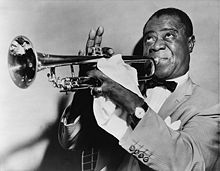 Louis Armstrong musician
Louis Armstrong musician- Geoffrey Beene fashion designer
- Truman Capote writer
- Kitty Carlisle singer, actress
- Van Cliburn concert pianist
- Michael De Bakey heart surgeon
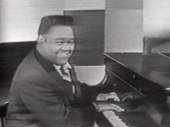 Fats Domino musician
Fats Domino musician- Louis Moreau Gottschalk pianist, composer
- Bryant Gumbel TV newscaster
- Lillian Hellman playwright
- Al Hirt trumpeter
- Mahalia Jackson gospel singer
- Dorothy Lamour actress
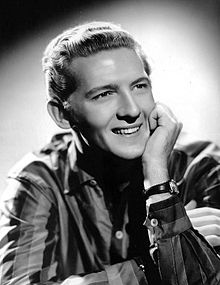 Jerry Lee Lewis singer
Jerry Lee Lewis singer- Huey P. Long politician
- Wynton Marsalis musician
- Jelly Roll Morton jazz musician, composer
- Huey Newton black activist
- Paul Prudhomme chef
- Cokie Roberts journalist
- Kordell Stewart football player
- Ray Walston actor
Credits:
See 50 states
See mental floss.com
See The Fact File.org
See History.com
See experience New Orleans.com
See fox8live.com
See Audubon.org
See ducksters.com
***Nelson, Ken. “Louisiana State History for Kids.” Ducksters, Technological Solutions, Inc. (TSI), www.ducksters.com/geography/us_states/louisiana_history.php. Accessed 17 February 2019.
See Tidbits of History.com/states for facts and trivia about each state.
